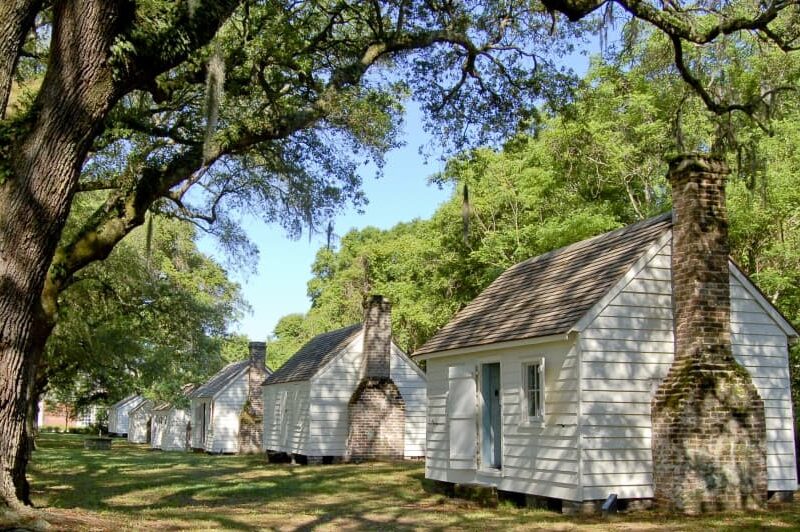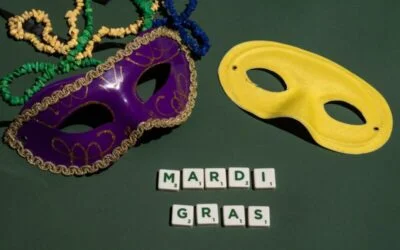A journey along the Gullah Geechee Corridor spans four southeastern states, with historic sites like Daufuskie Island and the Angel Oak Tree serving as rich hubs of Gullah Geechee history and culture.
For many Carolina Travelers, a window into Gullah Geechee culture is forged through a brief yet unforgettable meal. Many of today’s award-winning Lowcountry restaurants put out daily menus peppered with ingredients representative of Gullah Geechee cuisine – sorghum, benne, and okra, you’ll likely recognize.
Beyond velvety West African stews and exquisitely woven sweetgrass baskets, the impact of Gullah Geechee contributions reverberates in today’s Lowcountry hospitality and tourism industry, upon which the area’s economy is bolstered.
With annual events devoted to celebrating African American culture and cuisine happening in mid-winter, now is an excellent time to plan a long weekend itinerary marked by visits to sites along the Gullah Geechee Cultural Heritage Corridor. Equal parts educational, engaging, and epicurean, your journey will leave you with an indelible appreciation for the Gullah Geechee people and their resilience.
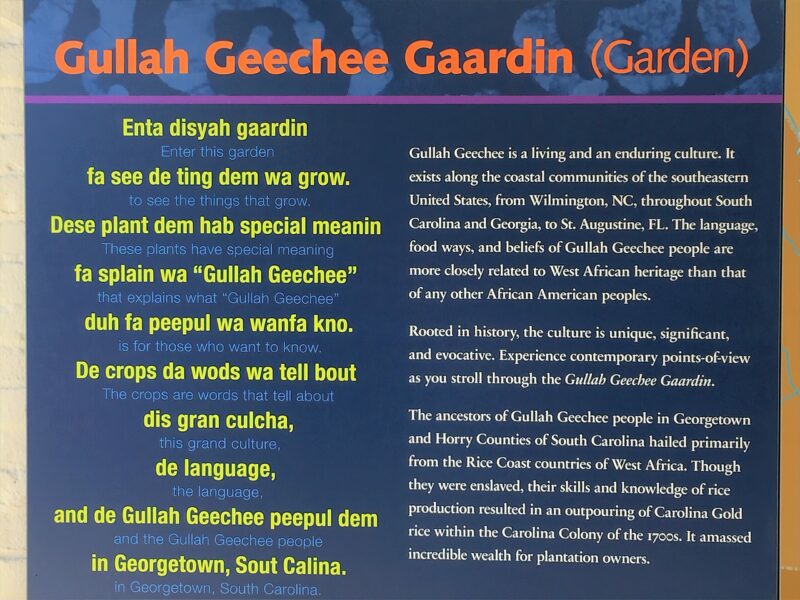
Did You Know? “Gullah” generally refers to a descendant of the SC Sea Islands and “Geechee” applies to Georgia.
A Culture Bonded Through Isolation
What makes the Gullah Geechee people so unique? The Gullah Geechee language is the only primarily African language-based creole ever developed in the United States.
While many may recognize “creole” in connection with the people and style of cooking that originated in Louisiana, a creole in language results when people who speak different languages are compelled to form a new language to interact with one another.
Having been taken against their will from their West African homelands, the enslaved people who were sold to rice, indigo, and cotton plantations along the Sea Islands of the Lowcountry formed their own Gullah creole language, cuisine, tools, and culture.
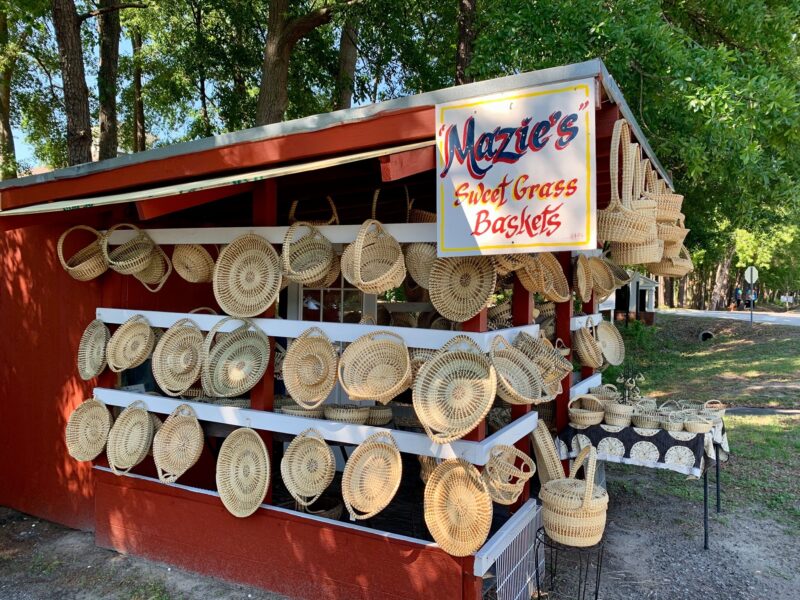
Sweetgrass basket-weaving is a long-standing art passed down from generations of Gullah Geechee families.
Lowcountry Symbols Rooted In Gullah Geechee Culture
Just as the Gullah Geechee people forged a new language as a means of survival (technically speaking, “Gullah” if you’re from the South Carolina Sea Islands and “Geechee” if you reside in the islands of Georgia), so, too, did they generate musical contributions that have evolved into today’s most popular and beloved art forms.
The source of their musical inspiration – the pain of being separated from their families, being pushed beyond their physical limits, and witnessing traumatic events – served as the impetus for soulful gospel music, rhythm and blues, hip-hop melodies, and jazz sets.
Cast nets and elaborate textiles once borne from a need to draw sustenance now adorn the walls of classic Lowcountry homes – chances are, most people in South Carolina have gifted or have been gifted a sweetgrass basket at some point in their lives. You’ll certainly find representations of Gullah Geechee art and decor throughout sites sprinkled along the Gullah Geechee Cultural Heritage Corridor.
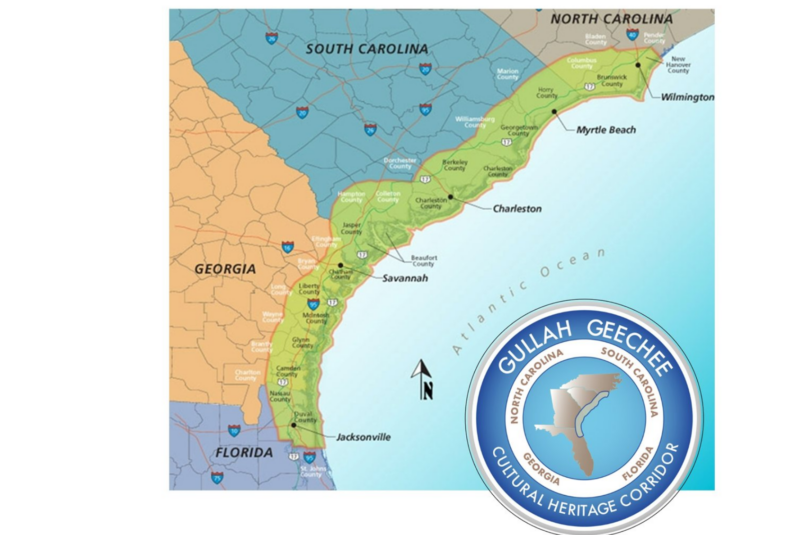
The Gullah Geechee Cultural Heritage Corridor spans four states.
What Is The Gullah Geechee Cultural Heritage Corridor?
As of 2023, there are 62 National Heritage Areas designated by the National Park Service. You may recognize some of the most popular national areas, like the Blue Ridge National Heritage Area in North Carolina and the Niagara Falls National Heritage Area in New York. Of the three that span South Carolina, the Gullah Geechee Cultural Heritage Corridor is the largest, covering 12,000 square miles from Pender County, NC, to St. Johns County, FL.
With preservation as its core objective, the Gullah Geechee Corridor offers free public programs to promote awareness of Gullah Geechee cultural practices, heritage sites, historical figures, and significant contributions. The following itineraries are ideal for a winter weekend when Gullah Geechee Corridor sites remain open and frequently host annual events in celebration of Gullah Geechee cuisine and culture.

Visit the International African American Museum in downtown Charleston, SC.
Learn And Discover: Visit These Gullah Geechee Cultural Sites
Whether you’re searching for a new city to explore over MLK weekend or a family-friendly destination over President’s Day weekend, these three cities are worth further investigation.
Illuminating Lectures In Murrells Inlet
While many may have visited Brookgreen Gardens during the holiday spectacular “Nights of a Thousand Candles,” you may be surprised to learn that the sculpture gardens are a site along the Gullah Geechee Cultural Heritage Corridor. Take part in illuminating tours and hands-on programs, such as “Handmade Gullah Dolls With Zenobia Harper,” “The Gullah Geechee Legacy of Jazz,” and “Gullah Customs, Language, and Remedies.”
For tasty Gullah Geechee cuisine near Brookgreen Gardens, it’s worth heading toward Myrtle Beach for a sit-down meal at Big Mike’s Soul Food. You can’t lose if you order the fried chicken or fish platter with collard greens and cornbread.
Evocative Exhibits In Charleston
Scholars estimate that more than 40% of enslaved Africans shipped to North America first arrived through Charleston Harbor, making the Holy City the largest disembarkation point for the trans-Atlantic slave trade.
Former Charleston Mayor Joe P. Reilly, Jr. led a successful push to erect the now-open International African American Museum (IAAM) overlooking that same harbor from Gadsden Wharf. The opening of the museum arrives several years after the massacre of nine Black worshippers at the Mother Emanuel A.M.E. Church.
Take your time strolling through the hallways of historical objects, artworks, films, and digital media experiences that showcase the harrowing journey across the Atlantic. Discover inspiring figures who have shaped American history and culture. In the Gullah Geechee exhibit, a full-size bateau (boat), a recreated “praise house,” and other artifacts illuminate early Gullah Geechee living.
Many who visit Charleston are drawn to popular sites like Boone Hall and Magnolia Plantation. We recommend McLeod Plantation as a hidden gem alternative. One of the longest-used African American cemeteries in Charleston, McLeod Plantation, the area is preserved by modern-day descendants of formerly enslaved persons.
You’ll find plenty of worthwhile options for Gullah cuisine in Charleston. Close to the IAAM, you can stop by the no-frills Bertha’s Kitchen. Order at the counter – if it’s a chilly winter day, go for the illustrious okra soup and an oxtail plate. Red rice on the side, always.
Scholarly Sanctuaries In St. Helena
St. Helena Island is home to the first school in the South for formerly enslaved West Africans: the Penn Center. Rising to the level of international exemplar after developing educational programming cultivated from both Tuskegee and Hampton Institutes, the Penn Center was also one of few sanctuaries where Dr. Martin Luther King, Jr. and the Southern Christian Leadership Conference members could meet safely during mandated segregation.
The most challenging part of planning your trip to St. Helena Island? Choosing where to eat. If, like us, you constantly dream of finding yourself in soul food heaven, head over to The Gullah Grub and order a little bit of everything: shrimp gumbo, fried shark, BBQ ribs, and some sweet potato pie.

